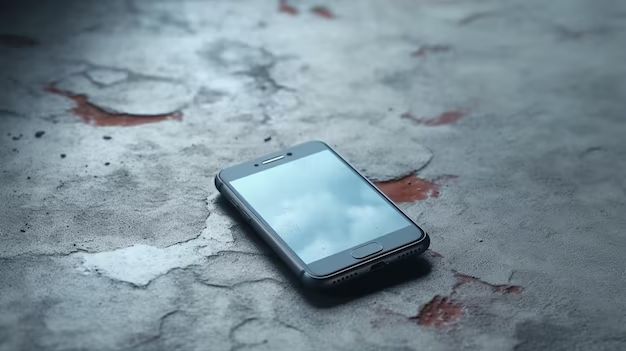Having a wet phone is an annoying and stressful situation. Water can cause serious damage to the internal components of your phone. The quicker you can dry your phone out, the better chance it has of surviving its water exposure unscathed. This article will provide you with tips and techniques to dry your phone out as quickly as possible.
What causes water damage in phones?
Most smartphones these days have some level of water resistance, meaning they can withstand light splashes or a very brief dunk with no issues. However, if your phone is exposed to water for an extended period, problems can arise. Here are some of the main ways water can damage phones:
- Corrosion – Water causes the metal contacts and circuits inside your phone to corrode and oxidize over time.
- Short circuits – Water can bridge connections between components in your phone, causing shorts and malfunctions.
- Mineral deposits – Dissolved minerals in water can leave behind sediment and buildup as the water evaporates.
- Display damage – Water underneath the screen can interfere with touch sensitivity, or cause the display to flicker.
The severity of water damage depends on factors like how long the phone was wet, whether power was running through it during that time, and the water’s mineral content. Acting quickly to dry out a phone can prevent permanent damage.
First steps when phone gets wet
When your phone experiences any kind of water exposure, there are some initial steps you should take right away:
- Remove power source – Unplug any charging cables and turn the phone off to avoid short circuits while wet.
- Dry exterior – Use a lint-free cloth to wipe away any standing water or moisture from the phone’s exterior case.
- Shake out water – Gently shake the phone to remove any trapped water droplets from crevices and openings.
- Disassemble – If possible, remove the back cover, battery, SIM card and any other removable components.
These steps will help prevent further water damage and prepare your phone for drying.
Drying techniques and methods
Once you’ve taken the initial steps above, you can begin drying out your phone in earnest. Here are some of the best techniques to accelerate the drying process:
1. Absorbent materials
- Place phone in a bowl/container of dry rice – Rice absorbs ambient moisture very effectively. Let phone sit for 24-48 hours.
- Use desiccant packets – Save the silica gel packs that come in packaging, and place phone in an airtight container with them.
- Blot with paper towels – Carefully place paper towels both underneath and on top of the phone to wick moisture away.
- Cotton swabs – Use cotton swabs or a toothbrush to gently clean out moisture from crevices and openings.
2. Drying aids
- Small fan – Use a fan to blow air over the phone and accelerate evaporation. Just ensure no moisture gets blown deeper into the phone.
- Vacuum seal – Seal phone in a vacuum bag and suck out all the air to create a moisture-free environment.
- Dehumidifier – Let phone sit in front of a dehumidifier or even in the refrigerator to aid moisture removal.
- Isopropyl alcohol – Use this cleaner to displace water and dissipate faster due to its volatility.
3. Heating methods
- Hair dryer – Use a hair dryer on a cool setting to gently warm phone and evaporate moisture.
- Bright sunlight – Similarly, placing phone in direct sunlight will aid drying with radiant heat.
- Heating pad – Put phone on low-medium heating pad to warm phone’s components.
- Rice sock – Fill a sock with rice and microwave briefly, then place over phone.
Avoid any high heat methods that could damage phone components. Heating should only be used to evaporate water, not actually dry out the phone through heat alone.
Other do’s and don’ts
Here are some other tips to keep in mind when trying to dry out a wet phone:
Do:
- Remove SIM card, memory cards and other removable pieces.
- Disassemble phone as much as possible to expose wet innards.
- Change out absorbent materials frequently.
- Use moisture-wicking materials like microfiber cloths.
- Dry out individual pieces like battery separately.
Don’t:
- Use high heat sources that could warp plastic like heat guns or ovens.
- Power on phone while still wet internally.
- Agitate or shake phone excessively.
- Give up too soon – drying can take 24 hours or longer.
- Place phone in silica beads or uncooked rice (pieces can get lodged inside).
When to seek professional help
If you try all these drying methods for 24-48 hours with no success, it may be time to seek professional phone repair. Signs your phone may need professional service include:
- Not powering on at all, even after thorough drying.
- Corrosion visible on charging port or other openings.
- Phone won’t charge or connect to PC when plugged in.
- Wet indicator stickers inside phone have turned red.
- Distorted or flickering display screen.
Phone repair experts have specialized tools and methods beyond typical household techniques. For extensive water damage or phones that won’t respond after thorough drying, professional service may be your best bet for restoring function.
Conclusion
Quickly drying a wet phone is crucial to preventing permanent water damage. Absorbent materials, drying aids, gentle heating, and disassembly of the phone can all help accelerate evaporation. Avoid moisture-trapping materials or excessive heat. With diligence and patience, there’s a good chance you can rescue a waterlogged phone with simple at-home drying techniques.
